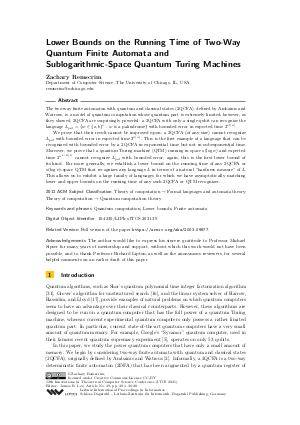LIPIcs.ITCS.2021.39.pdf
- Filesize: 0.59 MB
- 20 pages

 Creative Commons Attribution 3.0 Unported license
Creative Commons Attribution 3.0 Unported license




































Feedback for Dagstuhl Publishing